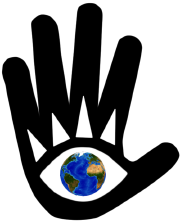Mount St Helens Eruption (MEDC)
 Where is Mount St Helens?
Where is Mount St Helens?
Located in Washington State, North West USA. Mount St Helens is a volcano in the Cascade Range of Mountains.
Click here for the Mount St Helens Volcano Web Cam, for up-to-date images of the volcano.
Key Dates:
Click here to see the key dates in the 1980 eruption from the volcanolive website.
Video of the 1980 Eruption
What happened?
The volcano didn't just erupt from the top, as expected. The side of the volcano was blown away as well due to the main vent being plugged by solidified lava from a previous eruption.
A pyroclastic flow (a hot avalanche of gas , ash, and rocks that rushes down the side of a volcano after an explosive eruption) moved at 300 km/hr. Trees over 360 square kilometres were burnt! 7000 animals were killed and 12 million salmon in a fish farm were killed.
61 people died.
Hot magma melted snow on the top of the volcano, this caused mudslides that flowed at 35 metres a second.
An ash cloud rose 24 km into the sky. Planes had to be diverted.
When the ash settled, it made a layer 15 cm deep. This made roads unusable and ruined crops.
Cost of the damage by the ash was $175 million!
After the eruption the volcano was 365 metres lower than it used to be.
Long-Term Effects
The US Government gave $951 million in aid to rebuild industry and compensate people.
The area is now a tourist attraction. the local economy is now wealthier than before the eruption.
There is now an increased danger from flooding, due to the new landscape.
Click here to visit the 'Geography-site' for a report on the eruption.
USDA Forestry Service website with further information about Mount St Helens. Click here
Click here for further in-depth information about the eruption.
Click here for a 360 degree panorama of Mount St Helens in 2006 (you will need QuickTime to view this)
Image courtesy of bbc.co.uk








